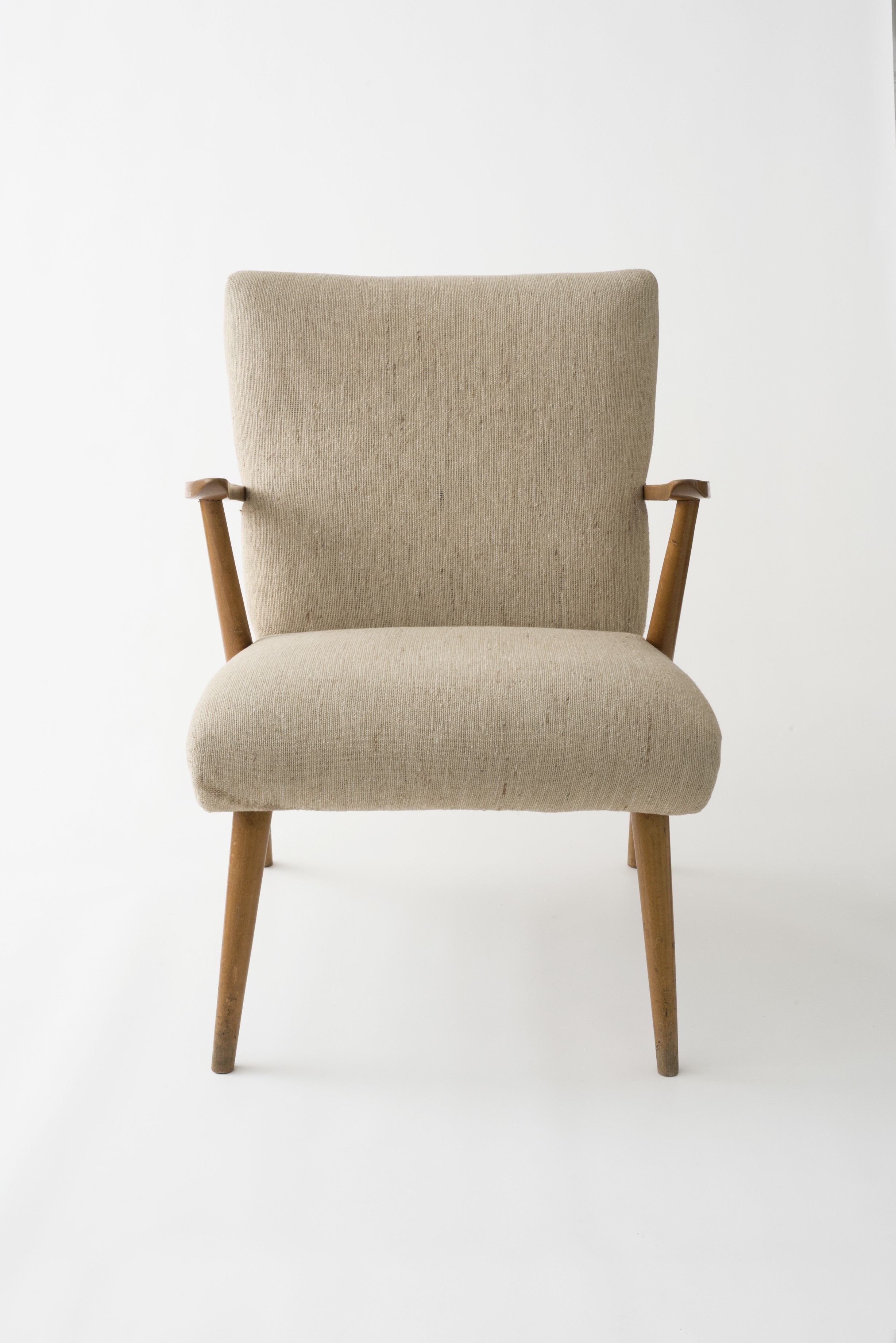Die Sitz- und Rückenpolster des beigefarbenen Armlehn-Sessels sind trapezförmig gestaltet. Während die Vorderbeine kurze, konisch geformte und nach oben breiter werdende Rundhölzer sind, verlaufen die Rundholzleisten der Hinterbeine diagonal nach vorne und bilden somit gleichzeitig die Stützen der Armlehnen. Diese sind nach außen leicht bauchig gestaltet und mit dem Rückenpolster verbunden.
Die Bezüge der Polster sind möglicherweise erneuert.
Der Sessel beruht vermutlich auf einer Gestaltung von Selman Selmanagic aus dem Jahr 1955 für den VEB Deutsche Werkstätten Hellerau.
en

